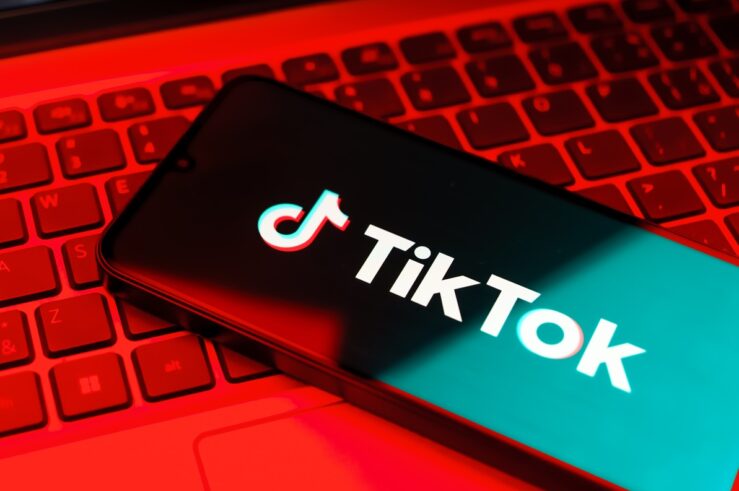Everyone is talking about Steve Jobs’ open letter on DRM,”Thoughts on Music,” including, best among all of them, my colleague, Josh.  Among many others, see excellent entries from Jim DeLong, Randy Picker and Mike Madison. Frank Pasquale weighs in with a predictable post about how wonderful the world would be if we just regulated his (perfect) vision of the world, but Josh pretty handily skewers his musings.
The topic is an interesting one, but I think there’s an important element missing from most of the analyses I’ve seen. Practically at random, I’ll take off from Mike Madison’s post (itself taking off from Randy Picker’s). Mike says:
Second, and more pragmatically for the moment, Apple’s interest lies in strengthening the market position for the iPod itself, regardless of where the content comes from. As Randy notes, with Apple’s DRM the iPod is a platform, and strong measures to prevent reverse engineering are in Apple’s interest to maintain its platform status. Or, in other words, in recent years Apple has taken a number of steps to position itself as a content company (cf. the purchase of Apple Corps trademarks, for example), but it turns out to be a hardware company after all. At least until the next generation of media player comes along and dislodges the iPod.
Mike seems off the mark with this comment about Apple as a content company. In what way is Apple a content company? It’s a content company like Wal-Mart is a content company; like Kroger is a content company. Which is to say, at least when it comes to the digital music/mp3 player world, not much at all. What Apple is, in the music content space, is a middleman. It provides content manufactured by someone else.Â
Which brings us to the really important thing that Apple does make, and it does sell. And that is . . . .Â
Well, before we get there, let me just note one more thing: Apple is, as Mike notes, a hardware company. It makes hardware. It sells hardware. It happens to sell a lot of it because it is also a brand company. But it capitalizes on its brand investment primarily via hardware sales.
Ok, so, what’s the punchline? The punchline is that Apple manufactures and sells something else along with its shiny iPods, and it’s what facilitates the whole enterprise. Apple is also a DRM COMPANY. Apple manufactures DRM. It operates a two-sided market where it sells DRM to content providers and DRM-ed content to end users. It sells hardware to end users, too, to enable the use of the DRM. And it sells enough of this hardware to convince the content providers that it’s worth paying for the DRM because the DRM enables access to that healthy customer base.
Now as with any two-sided market, the pricing decision here is a complex one. Do you charge the content providers for the DRM and practically give away the hardware? Do you make your money on the hardware and practically give away the DRM?  Whatever the decision, of course, the goal is to bring in as many end users as possible–either because the large market makes the DRM more valuable to the content providers or because the more end users, the more hardware sales. The key in either case is DRM: On the one hand if the DRM is no good, the content providers aren’t likely to pay much for it, because bad DRM (and here I mean either DRM that is too hard for end users to use and/or DRM that doesn’t effectively protect content from unauthorized copying) leads to a smaller end user market for the platform. On the other hand, if your DRM is no good (because it can be played on anyone else’s hardware and/or because it is too hard for end users to use), end users are less likely to buy your hardware. (Mike starts to get to this when he talks about the iPod as a platform).
It is easy to forget in all of these debates that there is a competitive market for DRM. It’s easy to forget because no one listens to DRM or holds it in their hot little hands. But there is competition in this market, and there is innovation. Microsoft’s Zune incorporates its own DRM, and you’ll see Microsoft claiming that its DRM is better than Apple’s.  Much (most?) DRM comes bundled with content, but not all of it does. A quick search takes us to this site that seems to sell Microsoft’s Windows Media DRM, for example. In keeping with its overall business model, Apple does not license or sell its DRM separately.
What does all this mean? A few things. First, competition in the DRM market will, as all competition does, lead to better DRM–along all the relevant margins. Apple has an advantage now, and, of course, it sells image, not just content. But if Apple’s DRM loses its competitive edge, the content providers may buy their DRM elsewhere. Also, the DRM choice is not binary. On the one hand, this is an important point for all those people who push the Darknet-inspired idea that all DRM is doomed to immediate failure. In fact, while it may be that all DRM is imperfect, all DRM also impedes copying to some degree. The higher the obstacle, the better the DRM. Perfection is not required, only comparative advantage. Likewise, while the likes of Frank Pasquale may crow about the moral failure of DRM per se, the reality is that some DRM will be better than others at facilitating the sorts of consumption (unhindered playback; unhindered transferability; free (is that as in beer or freedom?–I never can remember) content; etc.) that Frank believes are inherent rights, and the rest of us believe may or may not be worth paying something for.Â
DRM is not really a commodity. It is manufactured by vigorous and innovative competitors in response to changing demand, technology, regulatory environments, etc.–just like hardware and content are. As Jobs says in his missive,
Apple, Microsoft and Sony all compete with proprietary systems. Music purchased from Microsoft’s Zune store will only play on Zune players; music purchased from Sony’s Connect store will only play on Sony’s players; and music purchased from Apple’s iTunes store will only play on iPods. This is the current state of affairs in the industry, and customers are being well served with a continuing stream of innovative products and a wide variety of choices.
These choices are enabled by–not in spite of–DRM, and some of the appreciable differences between these systems are attributable directly to differences in their DRM. It may be in the end that the system that wins this competition is no sytem at all–stand alone media players, playing unencumbered content purchased directly from the labels or sites like emusic. But for now, I think the debate tends to miss an important market and an important piece of this system. It would be a little like talking about the personal computer and word processor markets, while pretending like the operating system market didn’t exist.




